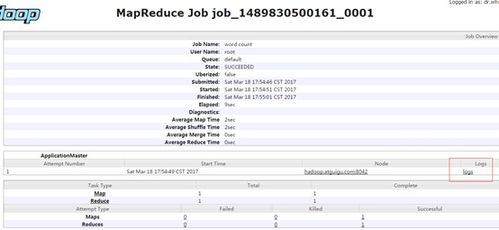大数据专业内存要多大
Title: Optimizing Memory Configuration for Big Data Technologies
In the realm of big data technologies, efficient memory configuration plays a pivotal role in ensuring optimal performance and scalability of data processing tasks. Whether you're delving into data analytics, machine learning, or realtime processing, allocating memory resources judiciously is crucial. Let's delve into the intricacies of memory configuration for various big data technologies and explore best practices to maximize performance.
Apache Hadoop:
Apache Hadoop, the cornerstone of the big data ecosystem, comprises multiple components such as HDFS (Hadoop Distributed File System) and YARN (Yet Another Resource Negotiator). Memory allocation in Hadoop is primarily managed through YARN.
Heap Memory Allocation
:Determine the heap memory size based on the available physical memory and the requirements of Hadoop daemons (such as NameNode, DataNode, ResourceManager, and NodeManager).
Allocate sufficient memory for Java heap space to prevent frequent garbage collection pauses, typically 6080% of the available physical memory.

Adjust the heap memory settings (Xmx and Xms) in the yarnsite.xml file according to the cluster's workload and size.
OffHeap Memory Configuration
:Configure offheap memory for services like HBase to avoid Java garbage collection overhead.
Tune the memory settings for offheap components based on the workload characteristics and data volume.
Apache Spark:
Apache Spark revolutionized big data processing with its inmemory computing capabilities, offering highspeed data processing and analytics.
Executor Memory Allocation
:Allocate memory to Spark executors considering the concurrent tasks, data size, and available resources.
Balance the memory allocation between executor memory and overhead memory (for internal metadata and user data) to prevent OutOfMemory errors.
Set the executor memory configuration (spark.executor.memory) in the Spark configuration files or dynamically adjust it based on job requirements.
Driver Memory Configuration
:Allocate sufficient memory to the Spark driver to handle task scheduling, job coordination, and communication with the cluster manager.
Adjust the driver memory settings (spark.driver.memory) based on the complexity of the Spark application and the size of the data being processed.
Apache Kafka:
Apache Kafka serves as a distributed streaming platform, handling realtime data feeds with high throughput and fault tolerance.
Broker Memory Allocation
:Allocate memory to Kafka brokers for message storage and caching to ensure efficient data handling.
Adjust the JVM heap memory settings for Kafka brokers (controlled via Kafka's server.properties file) based on the expected message throughput and retention policies.
Producer and Consumer Configuration
:Configure memory settings for Kafka producers and consumers to optimize message buffering and processing.
Finetune the clientside memory parameters (such as buffer.memory and batch.size) to balance throughput and latency according to the application requirements.
Best Practices:
Monitor Memory Usage
:Implement comprehensive monitoring of memory usage across all big data components using tools like Apache Ambari, Prometheus, or Grafana.
Set up alerts for memoryrelated metrics to proactively identify and mitigate performance bottlenecks.
Regular Tuning and Optimization
:Continuously monitor and analyze the performance of big data applications.
Regularly review and finetune memory configurations based on changing workloads, data volumes, and cluster resources.
Consideration for Containerized Environments
:In containerized environments (e.g., Kubernetes), allocate memory resources effectively considering the container overhead and resource isolation requirements.
Configure resource requests and limits for containers running big data workloads to ensure fair resource allocation and prevent resource contention.
Optimizing memory configuration is a continuous process, influenced by various factors such as workload characteristics, data volume, and cluster resources. By adhering to best practices and adopting a proactive approach to memory management, organizations can unleash the full potential of big data technologies and drive insights at scale.
For further insights and guidance tailored to your specific use case, consult with experienced big data architects and leverage community forums to stay updated on the latest advancements in memory optimization techniques.
This HTML format should be easy to integrate into your platform. Let me know if you need any adjustments!
标签: 大数据技术内存配置方案 大数据配置要求 大数据的内存计算特点有几个
相关文章
-
景顺成长,探索中国城市化进程中的绿色发展之路详细阅读

在21世纪的今天,城市化已成为全球范围内不可逆转的趋势,中国,作为世界上人口最多的国家,其城市化进程尤为引人注目,随着经济的快速发展,城市化带来的问题...
2025-10-01 199
-
深度解析,股票000777中核科技的投资价值与未来展望详细阅读

在当今的投资市场中,股票投资无疑是一个热门话题,而在众多股票中,股票代码为000777的中核科技因其独特的行业地位和发展潜力,吸引了众多投资者的目光,...
2025-09-30 241
-
深圳证券交易所交易规则,投资市场的指南针详细阅读

亲爱的读者,想象一下,你正站在一个繁忙的十字路口,四周是熙熙攘攘的人群和川流不息的车辆,每个人都在按照交通规则行事,红灯停,绿灯行,黄灯亮起时,大家会...
2025-09-30 201
-
基金202005,揭秘投资背后的逻辑与策略详细阅读

在投资的世界里,基金是一种备受瞩目的投资工具,它以其多样化的投资组合、专业的管理团队和相对稳定的收益吸引了众多投资者的目光,我们将深入探讨基金2020...
2025-09-30 194
-
探索中国平安行销,策略、实践与未来趋势详细阅读

在当今竞争激烈的市场环境中,行销策略对于企业的成功至关重要,中国平安,作为中国领先的金融服务集团,其行销策略不仅在国内市场上取得了显著成效,也为全球行...
2025-09-29 201
-
深入解析数码视讯股票,投资价值与市场前景详细阅读

在当今数字化时代,数码视讯行业作为信息技术领域的重要组成部分,正逐渐成为投资者关注的焦点,本文将深入探讨数码视讯股票的投资价值与市场前景,帮助投资者更...
2025-09-29 242
-
悦康药业,创新与责任并重,引领健康未来详细阅读

在当今这个快节奏、高压力的社会中,健康成为了人们越来越关注的话题,而在医药行业中,有这样一家企业,它以创新为驱动,以责任为担当,致力于提供高质量的药品...
2025-09-29 192
-
深度解析,定向增发股票背后的资本游戏与投资策略详细阅读

在资本市场的棋盘上,股票的每一次变动都牵动着投资者的神经,定向增发作为一种特殊的融资方式,因其能够为上市公司带来资金的同时,也为投资者提供了新的投资机...
2025-09-29 196
